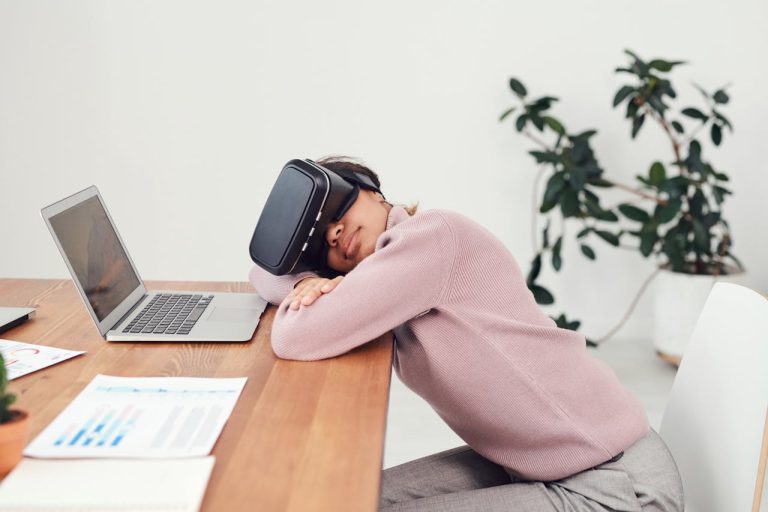Hello, fellow IB students! As someone who has mastered the intricacies of the DP Design Technology course, I’m excited to share my insights and tips on choosing the perfect Design Technology IA topics. Whether taking this subject on SL or HL, this guide help you excel in your Internal Assessment.
Understanding Design Technology in IB DP
Let’s start with the basics. The IB DP Design Technology course combines theoretical knowledge with practical application, fostering a unique and engaging educational experience. Having been deeply involved in this field, I’ve appreciated the distinction between the Standard Level (SL) and the Higher Level (HL). This difference is crucial in shaping your approach to the course, especially when choosing a topic for Internal Assessment (IA).
Here’s a brief overview of the key aspects that differentiate SL from HL in IB Design Technology:
- SL students cover fundamental concepts and enjoy a broad overview of design principles. On the other hand, HL students dig into more advanced topics, offering an in-depth research of complex design theories and practices.
- SL and HL students engage in practical projects, but HL projects often demand more technical skills and theoretical understanding.
- The assessment criteria for SL focus more on applying basic design concepts.HL assessments require a demonstration of a deeper understanding of design technology, along with a more sophisticated analysis.
- SL curriculum might include product design, sustainable design, and basic technological innovation. HL students may cover areas such as advanced innovation strategies, complex product development, and the impact of new technologies on design.
- SL courses typically require fewer study hours than HL, meaning HL students dedicate more time to in-depth research and complex project work.
Understanding these differences is crucial in making an informed decision about your IA topic. In my opinion, aligning your IA topic with your academic level ensures a manageable workload and maximizes your potential to excel. Whether you’re in SL or HL, your IA topic should reflect your interests and the level of complexity you are prepared to engage with.
What Is Internal Assessment in Design Technology?
Internal Assessment or IA in Design Technology, as part of the International Baccalaureate Diploma Programme, is a critical component that allows students to demonstrate their understanding and application of the course’s concepts through practical and investigative work. Unlike external examinations that test a student’s knowledge in a standardized format, the IA offers a more personalized and creative way to showcase their skills.
The IA typically comprises a significant portion of the student’s final grade in Design Technology. It involves a project where students apply their understanding of design principles, processes, and practices to solve a problem or address a need. This project usually includes several stages: identifying a problem or need, researching and developing a design brief, creating and testing a prototype or model, and evaluating the solution’s effectiveness.
One of the main aspects of the IA is that it allows students to choose their project topic, which should align with their interests and the syllabus content. Throughout the IA process, students demonstrate various skills, including:
- Investigating and understanding the problem or need, including market research and user needs.
- Applying creative and critical thinking skills to develop innovative solutions.
- Using appropriate tools, materials, and technologies to create a prototype or model.
- Assessing the solution’s effectiveness against the design brief and reflecting on the design process and outcomes.
- Keeping detailed records of their research, design process, testing, and evaluations, typically culminating in a written report or portfolio.
The IA in Design Technology is about the final product and the process. It’s an opportunity for students to develop and demonstrate their problem-solving skills, creativity, and ability to apply theoretical knowledge practically.
Remember, this is an opportunity to demonstrate your skills and knowledge. Avoiding common mistakes in IA writing can help you produce a thoughtful, well-researched, and high-quality project that reflects your hard work and dedication to the subject.
Design Technology IA Topics and Research Questions
In choosing your Design Technology IA topics, your interest should be the guiding star. However, consider the resources at your disposal and the scope of the topic. As someone who has mentored many IB students, I’ve noticed that the most successful IAs often stem from a student’s curiosity about a particular aspect of design technology. So, I will give you some ideas for Design Technology IA topics in this part.

Standard Level (SL) Design Technology IA Topics
Here’s a list of topic ideas for SL students in IB Design Technology, each accompanied by a potential research question to guide the investigation:
- Eco-Friendly Packaging Solutions. How can eco-friendly packaging reduce environmental impact in the food industry?
- Sustainable Fashion Materials. What are the most sustainable materials for fashion design, and how do they compare to traditional materials?
- Ergonomic Design in School Furniture. How does ergonomic design in school furniture affect student comfort and concentration?
- Solar Powered Devices for Homes. Which solar power devices are most efficient for household use?
- Design of Educational Toys for Children. How can educational toys be designed to enhance learning in children aged 5-8 years?
- Improving Kitchen Appliances for Efficiency. How can the design of a kitchen appliance be improved for energy efficiency?
- Bicycle Helmet Safety Features. What are the most effective safety features in bicycle helmets for urban cyclists?
- Portable Water Purification Systems. How can portable water purification systems be more efficient for use in remote areas?
- Smartphone Durability Improvements. What design changes can improve the durability of smartphones?
- Design of Assistive Devices for the Elderly. How can design improvements in assistive devices enhance mobility for older people?
- Recycling Systems in Urban Areas. How can design improvements in recycling bins increase recycling rates in urban areas?
- Environmentally Friendly Public Transport. What design features make public transport more environmentally friendly?
- Innovative Household Storage Solutions. How can design innovations improve space efficiency in small urban apartments?
- Energy-Efficient Lighting Solutions. What are the most effective design modifications for energy-efficient lighting in schools?
- Gardening Tools for Arthritic Individuals. How can gardening tools be redesigned to be more user-friendly for individuals with arthritis?
- Noise Reduction in Urban Homes. How can design technology reduce noise pollution in urban residential areas?
- Biodegradable Footwear Materials. What are the most effective biodegradable materials for designing sustainable footwear?
- Improving Air Quality with Indoor Plants. How can the design of indoor plant systems improve air quality in homes?
- Portable Solar Chargers for Mobile Devices. How effective are portable solar chargers for mobile devices in different environmental conditions?
- Designing Multi-Purpose Educational Spaces. How can educational spaces be designed to serve multiple purposes effectively?
- Sustainable Cooking Technologies in Developing Countries. How can cooking technologies be made more sustainable in developing countries?
- User-Friendly Design in Public Transportation. What design features can make public transportation more user-friendly for people with disabilities?
- Water Conservation in Household Products. How can household products be designed to conserve water usage?
- Improving Safety Features in Children’s Playgrounds. What design improvements can enhance safety in children’s playgrounds?
- Wearable Fitness Trackers for the Elderly. How can wearable fitness trackers be designed specifically for older people?
These topics can inspire thorough research and practical application, aligned with the curriculum and the depth of study required at the SL in IB Design Technology.
Buy IB IA with Full Confidentiality!
Grab your IB IA with full privacy guaranteed.
Our no-leak policy keeps your details 100% secure.

Higher Level (HL) Design Technology IA Topics
Here are Design Technology IA topics to provoke thoughtful exploration and application, tailored to HL students’ learning objectives and complexity level.
- Advanced Prosthetics and Movement Accuracy. How can the design of advanced prosthetics improve movement accuracy for amputees?
- Smart Fabrics and Wearable Technology. How can smart fabrics be integrated with wearable technology for health monitoring?
- Sustainable Urban Infrastructure. What design strategies can be implemented to create sustainable urban infrastructure?
- AI in Home Automation Systems. How can AI be integrated into home automation systems to enhance efficiency and user experience?
- Biodegradable Plastics in the Automotive Industry. What are the implications of using biodegradable plastics in automotive design?
- Renewable Energy Systems in Architecture. How can renewable energy systems be effectively integrated into modern architecture?
- High-Efficiency Water Desalination Methods. What design innovations can improve the efficiency of water desalination methods?
- Waste Management and Recycling Technologies. How can new technologies improve waste management and recycling processes in cities?
- Aerodynamics in Sports Equipment Design. How does aerodynamic design affect the performance of sports equipment?
- Sustainable Agricultural Technologies. How can technology be designed to promote sustainable agriculture?
- Advanced Robotics in Healthcare. How can robotic design improve healthcare services?
- Eco-Friendly Transportation Systems. What are the most effective design features for eco-friendly public transportation systems?
- Smart City Technologies for Traffic Management. How can smart city technologies be used to improve traffic management?
- Efficiency in Solar Panel Technology. What design innovations can increase the efficiency of solar panels?
- 3D Printing in Custom Medical Devices. How can 3D printing be used to design custom medical devices more effectively?
- Nano-technology in Textile Production. How can nano-technology be used to improve the functionality of textiles?
- Sustainable Building Materials in Extreme Climates. What sustainable building materials are most effective in extreme climates?
- Automated Waste Sorting Systems. How effective are automated waste sorting systems in managing municipal waste?
- Biometric Security Systems in Personal Devices. How can biometric security be improved in personal electronic devices?
- Smart Grid Technology in Urban Areas. What is the impact of smart grid technology on energy consumption in urban areas?
- Hydroponic Systems for Urban Agriculture. How can hydroponic systems be optimized for urban agriculture?
- Innovative Packaging Solutions to Reduce Food Waste. How can packaging design innovations help reduce food waste in the retail sector?
- AI in Precision Farming. How can AI be used to improve efficiency in precision farming?
- Thermal Insulation in Eco-Friendly Homes. What are the most effective thermal insulation materials for eco-friendly homes?
- Sustainable Transportation Solutions in Megacities. How can design technology contribute to sustainable transportation solutions in megacities?
These topics challenge you and allow deeper research of IB Design Technology principles.
Conclusion
The Design Technology IA allows you to research an area you’re interested in while remaining inside the IB framework. Accept this task with enthusiasm, and you’ll perform well. A well-chosen topic, together with proper planning and execution, is the key to success on the IB Design Technology Internal Assessment. As someone who has been in your shoes, I can promise you that this road, while challenging, is extremely rewarding. Good luck, and remember that you can always contact our experts if you need help with Internal Assessment writing.

Nick Radlinsky
Nick Radlinsky is a passionate educator, marketer, and management expert with over 15 years of experience in the education sector. After graduating from business school in 2016, Nick embarked on a journey to earn his PhD, fueled by his dedication to making education better for students everywhere. His extensive experience, beginning in 2008, has made him a trusted authority in the field.
Nick's groundbreaking article, published in Routledge's "Entrepreneurship in Central and Eastern Europe: Development through Internationalization," showcases his keen insights and commitment to improving the educational landscape. Guided by his motto, "Make education better," Nick's mission is to simplify students' lives and promote efficiency in learning. His innovative ideas and leadership have helped transform countless educational experiences, setting him apart as a true pioneer in his field.




